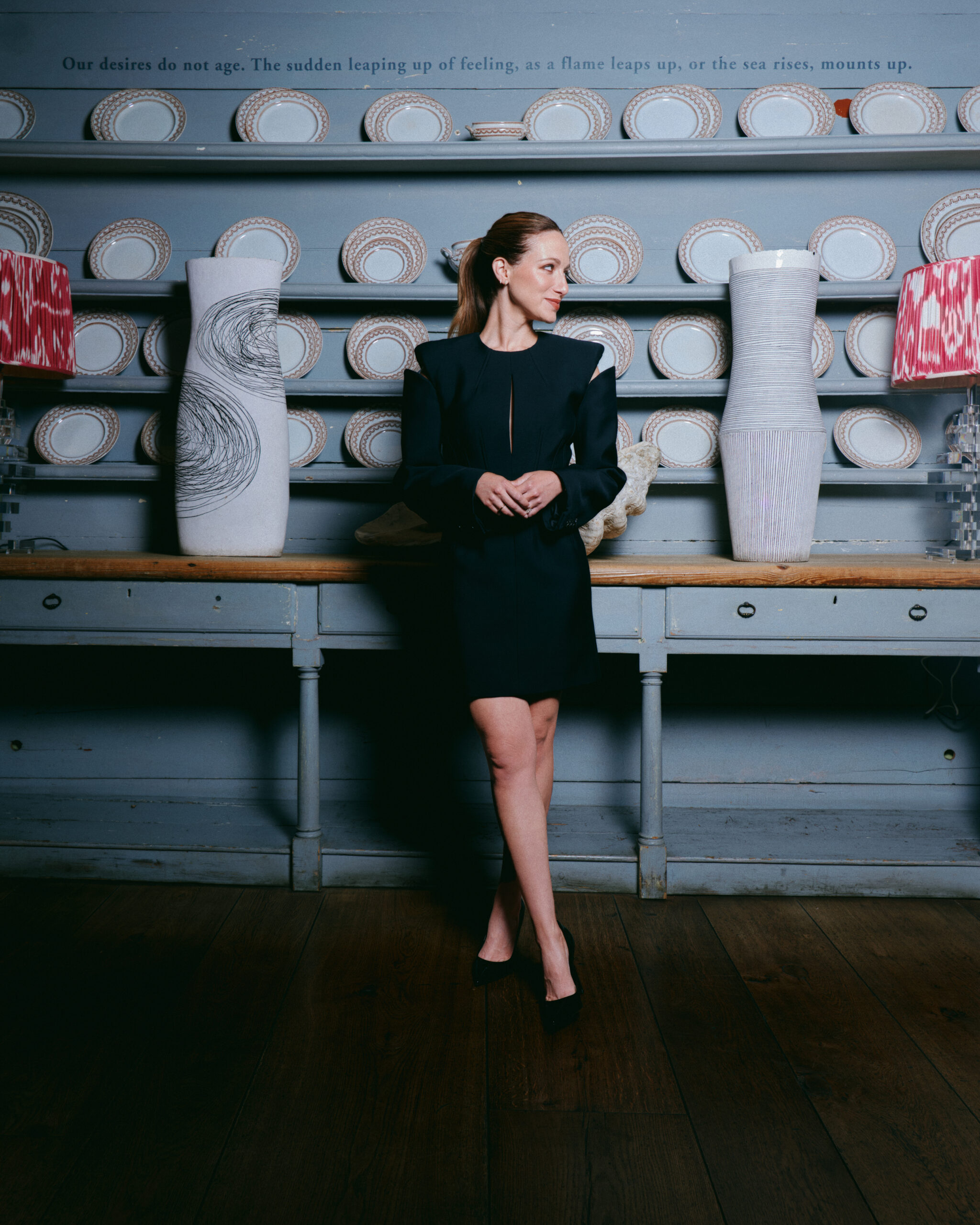
For Alabama native Francesca Barker McCormick, the journey to debuting onscreen in horror flick 213 Bones, out earlier this week, was far from formulaic. First, there was time spent designing her own clothes in childhood. Then, there was the move to New York, where she worked at Vogue under Anna Wintour as a market stylist. In 2020, the pandemic pushed the luxury shopping activations she produced and hosted on-camera. That’s when things changed.
Performing for an audience inspired an unexpected interest in staying in front of the camera, leading to acting classes, auditions, and now, a flurry of new projects including a yet-to-be-announced series on Disney+ and Forelock, a dark comedy alongside Emily Swallow and David Krumholtz. Whether working in style or the performing arts, McCormick’s narrative vision shines through. After all, she helped brands tell a visual story to bring their looks to life, and now applies that lens to the array of characters she portrays. For CULTURED, the actor shared a look at her unorthodox journey breaking into two hard-to-crack creative industries.
CULTURED: What first drew you to fashion, and did any of that experience translate into acting?
Francesca Barker McCormick: I grew up in Alabama glued to anything that brought New York and fashion to life. I’d sketch looks, hunt for buttons and zippers, and mail them to my great-aunt in Puerto Rico, an incredible seamstress, who’d send back the finished pieces. Seeing an idea turn into something I could wear was my gateway into the craft. I didn’t ultimately pursue design, but that experience shaped my respect for designers’ visions and made the Condé Nast world feel like the ultimate destination. Even though I was walking guests through a collection, it was still storytelling—building an arc, pacing, and point of view. Fashion taught me adaptability, point of view, and precision; acting lets me channel the same muscles in a new medium.
CULTURED: Can you share any guidance to the young professionals today looking to break into the fashion industry?
McCormick: There’s no single way in, so don’t pigeonhole yourself at the start by thinking it’s one department or nothing. At Condé Nast, you’re surrounded by world-class creatives, so don’t hesitate to start as an assistant. Show up early, prepared, and solutions-first. Be a sponge: listen, take notes, ask thoughtful questions, and deliver. The people you admire likely began the same way. And remember: nothing is permanent. Careers zigzag—I’ve seen countless colleagues move across departments and thrive. Bring work ethic and curiosity, and your path will find you.
CULTURED: What’s the biggest lesson you took from your time at Vogue?
McCormick: The small details matter, they don’t go unnoticed, and they’re what take any experience from good to exceptional. I also believe thank-you notes are respect and gratitude you can hold; the idea that it’s “try-hard,” especially when handwritten, misses the point. It’s gracious, professional, and memorable. Finally: don’t pass along a bad day. Someone else’s energy doesn’t dictate yours. Kindness, consistent work ethic, and clear values carry you farther. I keep this quote and reminder close: “Be the best at everything that requires no talent.”
CULTURED: How important is it to you that the fashion industry, from the highest levels, creates a sense of accessibility and sustainability? Do you think it’s been making progress in that direction since you started out?
McCormick: It’s essential. Fashion shapes what we value. In an ideal world, the top of the industry would model access (representation, sizing, and realistic price pathways) and responsibility (longevity, less waste, and fair labor). There has definitely been progress, including expanded sizing, more inclusive campaigns, and growth in rental and resale, but overproduction and greenwashing are still real. My approach, while not perfect and always with room to grow, leans heavily on consignment and vintage pieces, tailoring, and brands that are transparent. In my journey to make better brand choices, I’ve been using the resource Good On You, which allows me to learn how sustainable brands are and discover the brands doing better.
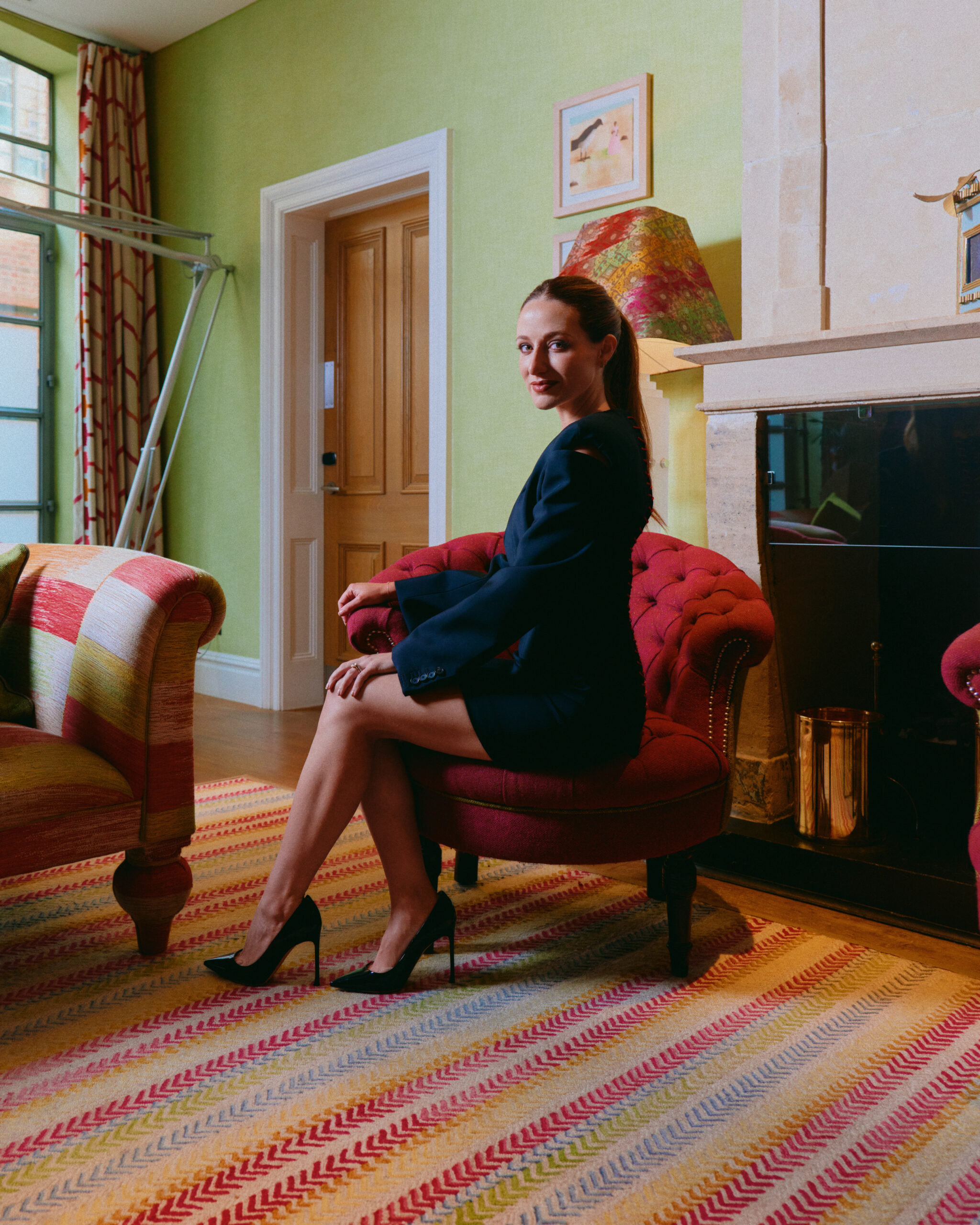
CULTURED: You’re in the new film 213 Bones. What allure did this role have for you, and how did you prepare for the character?
McCormick: What initially drew me in was the chance to live inside a whodunnit. Every role plants a little doubt in the audience’s mind, so as an actor you’re testing your character’s moral lines: where would she stop, what would she never cross, and why? It became a fun, layered process that also meant planting Easter eggs for eagle-eyed viewers. Then there’s the pure thrill that horror invites: the stakes are life-or-death, which is the best playground to push yourself.
In terms of preparation, working closely with our writer-director, Jeff Primm, was key. He built a genuinely collaborative process: we did our character and scene breakdowns, then sat down with him to share what surfaced. He refined dialogue to reflect those discoveries, so it felt like the characters were being carefully looked after. On set, he encouraged different beats and choices to see what felt most alive in the storytelling. For my role, that openness let me map her background in a way that felt complete. We unpacked every chapter, leading to where the film ultimately lands.
CULTURED: Did playing a dark character make this role more exciting to you?
McCormick: Absolutely. What enticed me most was how layered she is. Laurie presents as composed, calculated, and controlled, but on the inside, she’s fraying. She’s driven by psychology and motive, not shock. She doesn’t experience it as unraveling; she sees it as justice, which is exactly what makes her frightening. The challenge was to resist playing “the villain.” Labels flatten people. My job was to understand her, to map the hurts and beliefs that let her justify the extremes. Once I unpacked that, I could trace how someone like her might make those choices. If you believe she once loved and hoped, the descent becomes even more haunting. If I’d focused on the outcome, the violence or the twist, I’d lose the human being. I stayed rooted in her logic, her pain, and her version of the truth, because ultimately no one sees themselves as the villain in their own story; the danger comes from how justified she feels, not how unhinged she looks. That process, and that challenge, were exactly what excited me about taking the role.
CULTURED: Were you nervous to tap into the intense moments, or did it come naturally to you?
McCormick: A healthy amount of nerves is useful. It tells me the stakes matter. The intensity came from preparation and a safe, collaborative environment. Before I ever stepped on set, I’d mapped Laurie’s beats and done breath and movement work to anchor her physicality. On the actual shoot day, I let the circumstances do the work and set the prep aside, trusting the actions would flow from it. Every stunt and movement was safely choreographed and rehearsed in advance, so that the intensity never escalated into anything dangerous.
CULTURED: You’re appearing in Forelock alongside Caleb Alexander Smith and David Krumholtz. What can you tell us about the project so far?
McCormick: I can’t say much about Forelock, since the plot is still under wraps, but it was such a fun experience to shoot right here in Los Angeles. It’s a dark comedy that explores Los Angeles and the American Dream from a bold, new perspective. Like Jeff on 213 Bones, Caleb was both the writer and director, with the added dynamic of also leading the film on screen. Working with someone embedded in the story from every angle was so inspiring. It created a set that was both collaborative and electric. Switching to a role set in contemporary LA was a full pivot from playing a coroner in the 1990s. My character in Forelock tapped into a particular energy where ambition is high and self-awareness is, let’s say, negotiable.
CULTURED: You’ve now conquered horror. Which genres are under consideration for your next project?
McCormick: I’m open to any genre; the filter for me is the work. I’m drawn to roles that challenge me, whether that’s accent work, a new physical or movement vocabulary, or the research demands of a period piece that asks for both. If it challenges me, I’m in—whatever the genre!

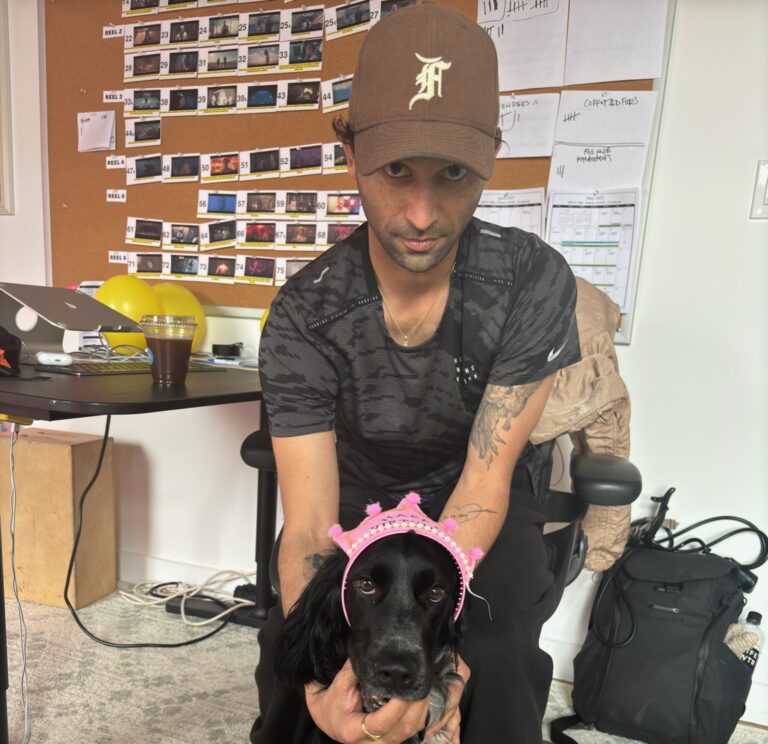
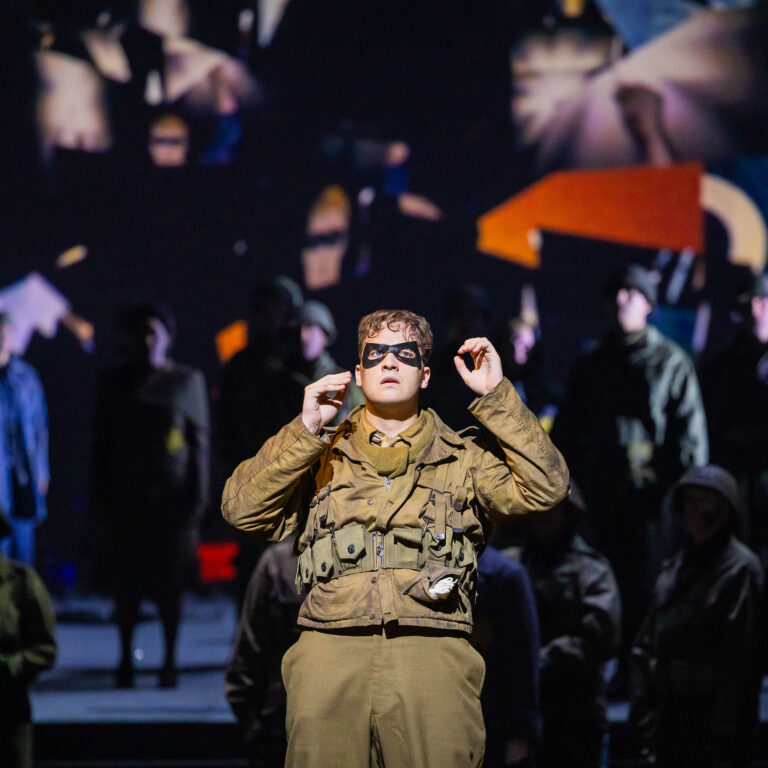
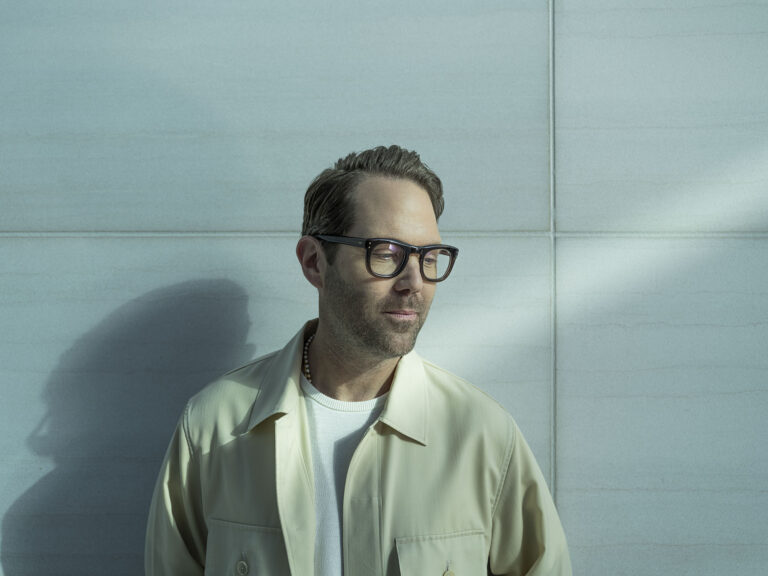
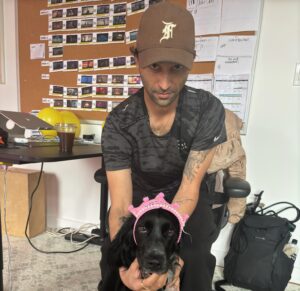
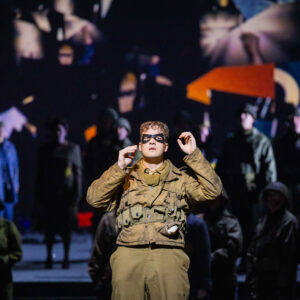
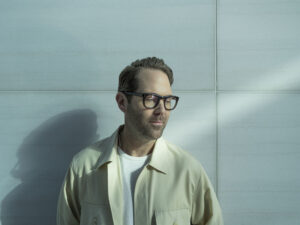



 in your life?
in your life?

